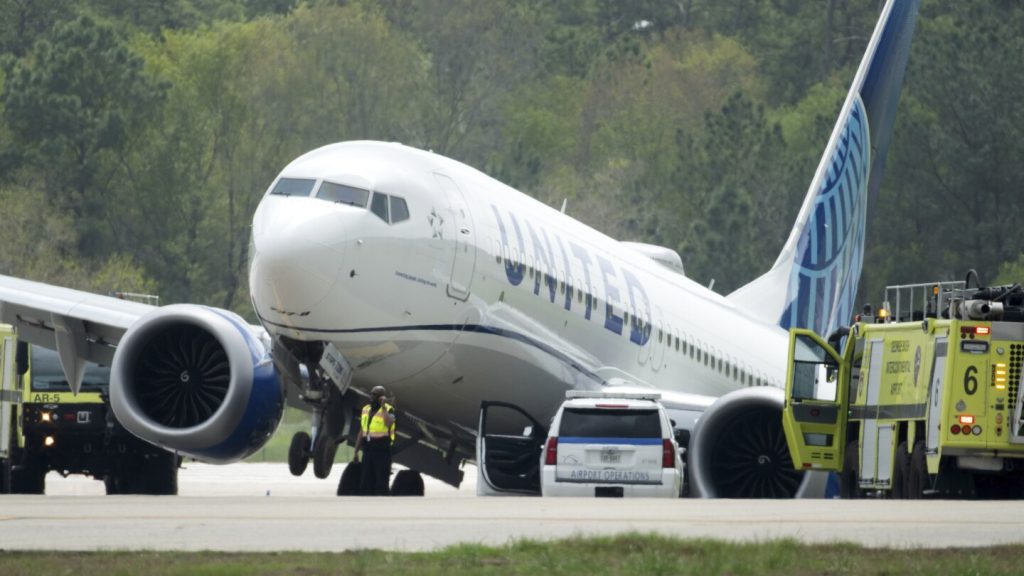Investigators will take a thorough look at the United Airlines jet that slid off a taxiway in Houston last month after the pilot reported less effective brakes and a violent shaking of the plane and brake pedals. The National Transportation Safety Board’s preliminary report revealed that the pilots were uncertain about ground conditions as they approached the runway at George Bush Intercontinental Airport. While the captain believed the runway was dry, the co-pilot thought it was wet, leading to the captain disabling the autobrakes after touchdown to expedite their time on the runway and ensure passenger comfort.
With the runway in sight, the captain attempted to steer onto a taxiway while applying significant pressure on the brake pedals, resulting in the plane veering off the taxiway and into a grassy area where its left main landing gear broke off upon impact with a concrete structure. Fortunately, none of the passengers or crew members onboard were injured in the incident. The NTSB’s preliminary report did not provide a definitive cause for the accident, as further investigation is required to determine the underlying factors that contributed to the jet sliding off the taxiway.
This accident comes as part of a series of incidents involving United Airlines planes, prompting the airline’s chief executive to reassure passengers about the safety of the carrier. The NTSB typically takes a significant amount of time, often a year or more, to conduct a thorough investigation and reach definitive conclusions regarding aviation accidents. In this case, the focus will be on analyzing the performance of the Boeing 737 Max’s braking system, as well as assessing the decision-making process of the flight crew leading up to the runway excursion in Houston.
The safety of airline operations remains a top priority for investigators, airlines, and regulatory authorities, as incidents like the one involving the United Airlines jet in Houston highlight the importance of proper training, procedures, and equipment maintenance in ensuring passenger and crew safety. The outcome of the NTSB’s investigation will provide valuable insights into potential improvements that can be made to prevent similar accidents in the future, helping to enhance overall aviation safety standards and practices.
Passengers and industry stakeholders can rest assured that aviation safety measures are continuously being reviewed and enhanced to mitigate risks and prevent accidents. The collaboration between regulatory agencies, airlines, and manufacturers plays a crucial role in maintaining high safety standards within the aviation industry. As the investigation into the United Airlines jet incident progresses, new information and findings will be shared with the public to promote transparency and accountability in addressing safety concerns and implementing necessary changes to prevent similar incidents from occurring in the future.
Airline incidents serve as powerful reminders of the importance of ongoing vigilance and adherence to safety protocols in the aviation industry. While accidents like the one involving the United Airlines jet in Houston are rare, they underscore the need for continuous training, oversight, and improvement efforts to ensure the highest levels of safety for passengers and crew members. By learning from these incidents and implementing necessary changes, the aviation industry can further enhance its safety practices and maintain its reputation as one of the safest modes of transportation available to travelers worldwide.


